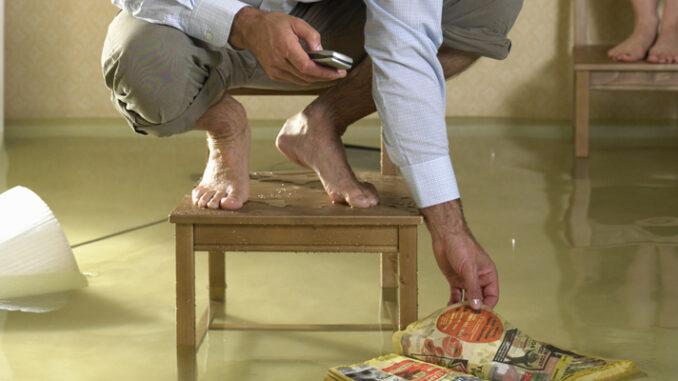
Last Updated on by Sabina
When faced with the aftermath of a flood, immediate action is crucial to minimize the damage and restore your property to its pre-flood condition. Water damage can lead to structural issues, mold growth, and other hazards if not addressed promptly. In this article, we provide essential steps and expert advice for emergency flood repair. By taking swift and decisive action, you can mitigate the impact of water damage and restore your property efficiently.

Ensuring Safety First
Prioritize Personal Safety
- Before entering a flooded area, ensure that it is safe to do so. Turn off electrical power if there is a risk of electrical shock.
- Wear protective gear such as rubber boots, gloves, and masks to safeguard against contaminated water and potential health hazards.
Secure the Property
- If it is safe, assess the extent of the flooding and take steps to prevent further damage. Patch leaks, secure windows, and board up damaged areas if necessary.
Immediate Damage Control
Remove Standing Water
- Use pumps, wet/dry vacuums, or buckets to extract standing water from the affected area.
- Work systematically and remove as much water as possible to prevent further saturation and structural damage.
Salvage Valuable Items
- Prioritize the removal of valuable possessions, documents, and electronics from the flooded area.
- Move them to a safe, dry location to prevent additional damage.
Dry the Space
- Use fans, dehumidifiers, and open windows to facilitate airflow and speed up the drying process.
- Remove wet carpeting, furniture, and other porous materials that may retain moisture and promote mold growth.
Professional Restoration Assistance
Contact a Certified Restoration Company
- Engage the services of a professional restoration company with expertise in flood damage repair.
- Certified professionals have the knowledge, experience, and specialized equipment to assess and restore your property effectively.
Prompt Evaluation and Documentation
- Restoration experts will assess the extent of the damage, identify potential hazards, and develop a comprehensive restoration plan.
- Document the damage thoroughly through photographs and written descriptions for insurance purposes.
Comprehensive Restoration Process
Structural Drying and Moisture Removal
- Professional restoration teams employ advanced drying techniques and specialized equipment to eliminate moisture from walls, floors, and other affected surfaces.
- Thorough drying is crucial to prevent mold growth and ensure structural integrity.
Cleaning and Sanitization
- Remove any remaining contaminants, debris, and residue left by the floodwater.
- Apply appropriate cleaning solutions and disinfectants to sanitize the affected areas.
Repairs and Reconstruction
- Restoration professionals will repair or replace damaged structures, flooring, and other elements of your property.
- They will work diligently to restore your property to its pre-flood condition, ensuring structural stability and aesthetic appeal.
Preventive Measures and Future Preparedness
Waterproofing and Drainage Improvements
- Implement measures to prevent future flooding, such as installing sump pumps, improving drainage systems, and sealing vulnerable areas.
Review Insurance Coverage
- Regularly review and update your insurance coverage to ensure adequate protection against flood damage.
- Understand your policy terms, documentation requirements, and claims process in case of future incidents.
Emergency flood repair requires swift action and the involvement of professional restoration experts. By following the steps outlined in this guide, you can effectively address water damage, mitigate potential risks, and restore your property to its former state. Remember, safety should always be the priority, and seeking professional assistance will provide you.


